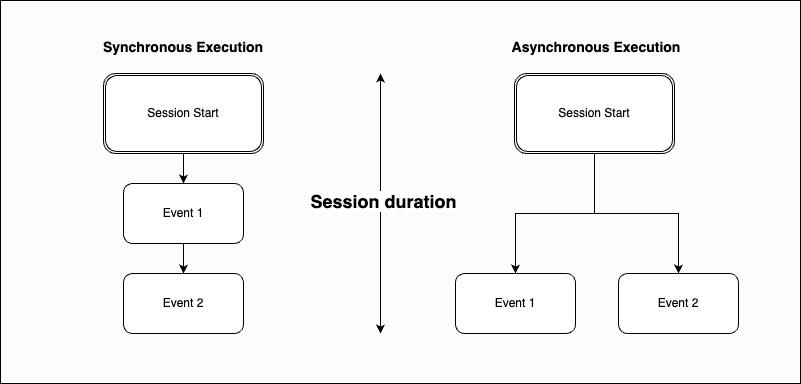Session-Level Metrics
Session Aggregates calculate various metrics at the session level to provide a comprehensive understanding of user behavior and application performance. Some key metrics include:| Root Field | Field | Description |
|---|---|---|
metadata | num_events 1 | The total number of events captured during the session. |
num_model_events 1 | The number of model-related events (e.g., LLM requests) within the session. | |
has_feedback 1 | A boolean indicating whether the session contains any events with user feedback. | |
cost 1 | The total cost incurred for LLM usage during the session, based on the pricing model of the LLM provider. | |
total_tokens 1 | The total number of tokens processed by the LLM during the session, including both user input and generated output. | |
prompt_tokens 1 | The number of tokens in the user input or prompts during the session. | |
completion_tokens1 | The number of tokens in the LLM-generated responses during the session. | |
start_time | The minimum UTC timestamp (in milliseconds) of start_time field of the session and its children. | |
end_time | The maximum UTC timestamp (in milliseconds) of end_time field of the session and its children. | |
duration | The difference of the end_time and start_time aggregates. Measured in milliseconds. However, this field will not be aggregated if manually declared. |
Coming soon: Aggregations for the following fields:
outputs: Theoutputsfield from the final event will be inherited on to the session.error: The session will adopt theerrorfield from the last child event that encountered a failure.
Session Duration
The duration of a session will be determined in one of two ways:- If the
durationfield is manually provided to the session, that value will be used. - Otherwise, the duration will be calculated by subtracting the earliest start time from the latest end time within the session.

Analyzing session aggregates
The HoneyHive dashboard provides an intuitive interface to explore and analyze session-level metrics. You can:- View trends and patterns in session metrics over time using interactive charts and graphs.
- Compare metrics across different user segments, application versions, or other dimensions using filters.
- Identify sessions with abnormal behavior, such as long durations or high costs, and drill down into individual session traces for further investigation.
Coming soon: Set up alerts and notifications based on thresholds or anomalies in session metrics to proactively monitor application health and user experience.
Best Practices
To get the most value out of session sggregates, consider the following best practices:- Ensure consistent instrumentation of session start followed by events operations across your application to accurately capture session boundaries.
- Use meaningful and consistent naming conventions for user properties and other dimensions to enable effective segmentation and analysis.
- Regularly review session metrics to identify trends, anomalies, and opportunities for improvement.
- Collaborate with cross-functional teams, such as product, engineering, and customer success, to share insights and drive data-driven decision-making.

